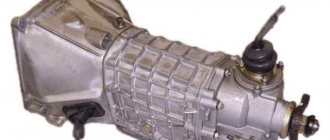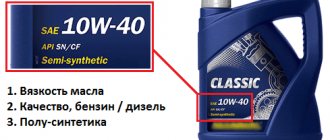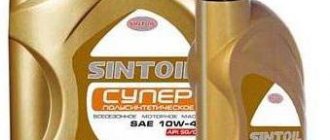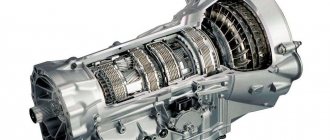general information
As already noted, a quality product must be certified. The presence of anti-counterfeit protection on the packaging also plays a role. Today, expensive branded oils are often counterfeited, selling them at a more affordable price. Many fall for this. As a result, the lubricant loses its effectiveness after just a few thousand miles. It practically does not remove carbon deposits, since they save significantly on the additive package, and in general the engine will run much worse on it.
That is why we can say that expensive is not always high quality and vice versa. A striking example of this is Gazpromneft oil. Consumer reviews are mostly positive, and this despite the low cost. The thing is that the more well-known the manufacturer, the more expensive such a product is, although it may not stand out with any special features compared to cheaper oils.
Viscosity and classification
First of all, you need to be able to select the correct viscosity of the engine oil. Often, the manufacturer specifies not only this parameter, but also provides a specific lubricant. If you follow these simple recommendations and don’t complicate things, the car’s power unit will thank you in the form of long-term, uninterrupted operation. On some brands of cars, the appropriate viscosity is indicated on the oil filler cap.
API classification of engine oil is also very important. The fact is that modern diesel and gasoline engines require a certain additive package, which is not necessary for older engines. For example, the API SM conformity mark was approved in 2010 and is suitable for the most modern gasoline internal combustion engines. There are also anti-oxidation additives and much improved viscosity characteristics at low temperatures. Now let's move on.
ABOUT
This company appeared in 2007; it is a subsidiary of an oil producing company. In just a few years of work, we managed to achieve high sales. Thus, modern Gazprom Neft lubricating oils are in demand not only in the Russian Federation, but also in countries such as Ukraine, Belarus, Kazakhstan and others.
Currently, Gazprom Neft motor oil, reviews of which we will consider, boasts a wide range. There is plenty to choose from for both domestic and foreign cars. Moreover, the company produces oils not only for cars, but also for trucks, which is an additional advantage. There are usually no problems with the choice, since it is really huge. You can find a suitable option for both a modern diesel engine and an old domestic gasoline engine.
Motor oils and everything you need to know about motor oils
Among the variety of lubricating fluids available today, it is not so easy to choose a product that will be the best option for a particular vehicle.
What you need to focus on when analyzing the products offered:
- Recommendations of the car manufacturer and tolerances (the most important aspect to avoid making a mistake with your choice).
- Oil type (its characteristics and replacement intervals depend on this).
- Temperature-viscosity and quality parameters of the liquid (they are established using international classifiers SAE and API).
- Condition of the equipment (depending on the age and degree of wear of the power unit, different lubrication may be required).
- Own financial capabilities.
What the manufacturer declares regarding Gazpromneft 10W40 semi-synthetic motor oil:
- the product is suitable for all-season use;
- the lubricant is intended for use in equipment engines (including those with high mileage) running on gasoline and diesel fuel;
- oil packaging options: 1, 4, 5, 20, 50, 205 l;
- API approval: SG/CD, official approval received from AvtoVAZ.
The characteristics of the oil are presented in the table.
Table. Basic properties of 10W40 motor oil from Gazpromneft.
| Characteristic | Parameter |
| Viscosity at 40/100 degrees (mm2/s) | 98,3/14,2 |
| Crystallization/flash point, degrees | -37/229 |
| Density, kg/m3 | 874 |
| Ash content | 0,9 |
Judging by these indicators, the technical fluid is quite competitive when compared with the products of leading domestic and foreign manufacturers, but its price is quite attractive.
However, when choosing a lubricant, it makes sense to focus not only on the data provided by the manufacturer, but also on reviews of people who have experience using the product.
Ivan Sokolov, Gazelle
I used (and continue to do so) oil in a company car. I maintain a replacement interval of 9...10 thousand km (I don’t recommend it anymore). For the sake of objectivity, I note that it was possible to check the performance of this semi-synthetic in the laboratory (before filling and after the change). In general, nothing criminal was revealed. All characteristics correspond to those indicated by the manufacturer himself. The viscosity and cleaning properties of the used oil have only slightly decreased. The engine runs fine with Gazpromneft oil. What I like is that the canister is quite inexpensive.
Igor, VAZ-2112 (high mileage)
I don’t have any special requirements for the quality of the oil, since in my situation (the car has already driven 208 thousand km) it’s simply stupid to fill it with expensive imported oil. In short, I’ve been filling Gazpromneft oil for almost two years. Yes, there is a slight waste, but I think given the existing wear and tear of the engine, this is normal. After switching from ZIC, what can we say: there is no particular difference in the operation of the engine, nothing knocks. Of course, I don’t expect miracles, it’s unlikely that the condition of the engine will improve (don’t fill it up), but it doesn’t seem to have gotten any worse. Well, the price (I’ve never seen it cost more than 1000 rubles per canister) is completely satisfactory. But when (I hope soon) I change my car, of course, for the new car I will choose a higher class oil.
Peter S, Ford Escort
I didn't like the oil. Yes, it is cheap, and in cold weather the engine starts without problems. The engine recently went through a complete overhaul. repair. And so, I filled it with Gazprom oil and drove no more than 2 thousand, I saw the pressure light on... I went to the service center and drained the oil. It was completely black. The lid is also all black, as if there had been no repairs... I don’t recommend this oil (it shouldn’t be fake - I bought it at their own gas station). I immediately poured another one.
San Sanych, Lada Granta
Switched to Gazpromneft from Lukoil. I didn’t like it (Lukoil) (there was some noise in the engine during operation). With the new lubricant the problem disappeared. I like the oil. The only thing is that at -20 outside it was not possible to start the car, but we almost never experience such frosts. There were no failures at -15.
Eduard V., Sobol
The car is working. 10 thousand oil passes normally. The price is reasonable. My review is positive.
Tolik
What could be wrong with oil produced using Chevron technology? The entire technology of its production is completely borrowed. At first the oil was produced in Italy (the plant was bought by Gazpromneft), now it is produced in Omsk. Therefore, there is hope that it should be of high quality (if it does not end up as a fake).
Evgeniy, our auto industry
Nobody writes about characteristics, tolerances, classifiers, as if they do not exist. People only care about the color, knocks, fumes... Do anything, as long as it is approved by the characteristics of the manufacturer of your car. The brand doesn't matter. Change the oil on time, fill it with the correct one according to SAE and API, and don’t buy it anywhere. Then there will be no problems.
Volgar
I fill the Volga with both Lukoil and Gazpromneft (all semi-synthetic). I don't see any difference. I didn't notice anything bad. As far as cheap oil goes, I consider both to be quite decent.
Gazpromneft motor oil: reviews and types
Consumer opinions boil down to the fact that lubricants from this manufacturer are much less likely to be counterfeited. This is due to the low cost of motor oil, therefore such counterfeit products are not very profitable. It is much more profitable to fake Motul or Castrol. That is why many people prefer domestic manufacturers, since there is confidence in the authenticity, and therefore, the characteristics will be close to those indicated on the packaging.
Currently, the most popular oil is Gazpromneft 5w40 (synthetic). Reviews confirm the high quality of the product. In addition, the manufacturer talks about the following advantages:
- good additive package; reduced fuel consumption; effective cleaning properties; protection of internal combustion engines from corrosion; minimal waste consumption.
In addition, all this is confirmed by laboratory tests, which is extremely important. This is due to the fact that in some cases the characteristics indicated on the manufacturer’s website do not always correspond to reality. It is worth noting that 5w40 synthetics are suitable for use in diesel and gasoline engines of cars and trucks. Can also be used for motors with API SM/CF class.
Engine oil
Knowing which motor oil to give preference is also important for motorists. Unlike diesel and gasoline, the situation with this product is somewhat different. All lubricants are sold sealed, so gas station workers cannot manipulate the products fraudulently. That is why when choosing oil you should especially pay attention to such parameters as:
- Pour point and ease of starting the engine in cold weather;
- Pricing policy;
- Chemical composition and effect on fuel consumption and unit power.
Lukoil brand products are superior to Gazprom in these parameters. In addition, the use of Lukoil products is recommended for most domestically produced vehicles. Engine oil from Gazprom is not so universal in this regard.
This video will tell you which fuel is better, Gazprom or Lukoil:
Published: November 10, 2020
Claimed benefits
is responsible for the quality of its products and values its reputation, so lubricants have a good quality base. The low cost, which is often off-putting, is due to the minimum cost, which is achieved through the use of modern technologies in production. In addition, the manufacturer provides a guarantee for the protection of the internal combustion engine in any operating mode if it is replaced in a timely manner.
There is also a separate category “Long Life”, which provides for a longer oil operating interval without loss of performance characteristics. It costs a little more, but it fully pays for itself, since the lubricant in the internal combustion engine needs to be changed somewhat less frequently. Gazprom Neft 5w40 oil also boasts decent viscosity-temperature characteristics. Synthetics, reviews of which we will consider later, are recommended for the efficient operation of the catalytic converter. This lubricant extends the life of the particulate filter, which fails precisely because of the low quality of fuel and oil.
Gazpromneft 5w40 oil: reviews from motorists
For the most part, they talk about low cost and decent quality. Drivers often compare it to Lukoil. The latter costs a little more, but does not stand out in any way. In addition, this is an extremely relevant choice for the Far East and northern regions. Drivers note that even at low temperatures it does not thicken much and allows them to start the engine without any problems.
Previously, the company was aimed at selling lubricating motor and transmission oils to large automobile factories; single products were rare. Now the situation has changed radically. At almost every gas station you can find Gazpromneft 5w40 oil. Consumer reviews often boil down to the fact that if you use a lubricant from a given manufacturer for a long time and observe replacement intervals, then everything will be fine. For example, at 5w40 the engine runs quieter, the operation of the hydraulic compensators is almost inaudible.
Transmission oils in Kazakhstan
Transmission oils are a special class of automotive oils intended for use in various friction units of vehicle transmissions and various gearboxes. Such oils are made on a mineral, semi-synthetic and synthetic basis, after which they are doped with a variety of additives.
Transmission oils for automatic transmissions differ from their analogues in their increased performance under heavy loads, as well as sliding speeds of rubbing surfaces. The most important indicator of such oils is the ability to create a durable protective film on the surface of friction units. Oils used in hypoid gears enter into a chemical reaction with the surface of the part, thereby preventing the parts from boiling. They also have anti-seize properties. Due to natural oxidation and contamination of gearbox oils during their operation, periodic scheduled replacement is recommended.
You can buy gear oils from the world's best manufacturers such as Shell, Lukoil and Castrol at an affordable price from a universal online store wholesale and retail. The product catalog widely presents a variety of oils and liquids recommended for various brands of cars: domestic Niva and VAZ, as well as popular foreign cars Chevrolet, Ford, Hyundai, Opel, Renault, Toyota, Nissan.
When choosing gear oil, you must take into account that such products are classified according to their viscosity and performance properties. Oils are divided into nine classes - 4 winter and 5 summer, each of which is assigned its own type of viscosity. But for all-season oils, a double index is always indicated. These classes are similar to those used according to Soviet GOST. The correct selection of oil is influenced, first of all, by the expected operating conditions. This means that if there is a class lower than necessary, the vehicle mechanism will simply fail. A higher class of oil will lead to cost overruns. Therefore, you cannot make mistakes here.
In automatic transmissions, it is recommended to use a special low-viscosity fluid instead of engine and transmission oils. Considering the variety of additives used and their price range, it should be noted that the cost of mineral oils is usually the lowest, but it also lasts much less than synthetic oils. The ideal option is semi-synthetic, with a good price-quality ratio.
Semi-synthetic base
This type of motor oil is mostly used in domestic cars and old foreign cars. It is also used on cars such as UAZ and others. Overall, it is a very worthy choice. Experts note that Gazpromneft semi-synthetics are no worse than Lukoil’s, and in some respects even win.
It is worth highlighting the following advantages noticed during direct use:
- practically does not burn; high viscosity-temperature characteristics; removes carbon deposits well; has a low cost.
In general, if you have the necessary approval for your car, then it’s definitely worth trying Gazprom Neft oil. Semi-synthetics have positive reviews in 70% of cases. Occasionally there is a well-founded negative, which will also be discussed.
Product Description
Gazpromneft 80W90 GL-4 gear oil is used in transfer transmissions, manual transmissions of buses, trucks and other equipment that are operated in moderate and severe conditions. Compared to analogues presented on the domestic market, the products have a number of differences.
- The use of an imported additive package together with unique compositions guarantees a reduction in the wear rate of bearings and gears under different operating conditions.
- Full compatibility with materials used in the production of gearboxes.
- Transmission oil Gazpromneft GL-4 80W90 is resistant to oxidation, has a good ratio of viscosity-temperature characteristics, does not foam and does not cause corrosion.
- When operating a vehicle in difficult conditions, reduced noise and wear of transmission elements are achieved.
- When working in winter, GAZPROMNEFT GL 4 80W90 still ensures easy gear shifting.
- The sulfur concentration in base oils has been reduced. Thus, the likelihood of chemical corrosion on non-ferrous metals is minimized.
The excellent technical characteristics of the products deserve special attention.
Main disadvantages
As noted above, consumers do not always respond positively to Gazpromneft 10w 40 oil. Reviews often indicate that, contrary to manufacturers’ claims, the lubricant burns off quite well. But here you also need to take into account the condition of the engine. In some cases, at -30 it was not possible to start the internal combustion engine, which may also indicate low quality viscosity characteristics.
The darkening is noticeable after 1-2 thousand kilometers, while imported oils change color a little later. But this should not be taken as a minus. Rather, it is an advantage that speaks of high detergents. But if the darkening is accompanied by deterioration in engine performance, then it’s worth thinking about.
Gazpromneft oil (synthetic) has more positive reviews. It is extremely rare to encounter dissatisfied users. If we take it from the total mass, then this is approximately 20%. But even here you need to understand that approximately half, complaining about engine oil, have serious problems with the engine, hence all that follows.
Characteristics
In terms of its basic properties, this lubricating fluid is in no way inferior to foreign analogues, although its price is somewhat lower. The mixture copes with the main task perfectly: protecting the rubbing parts of the engine from wear is carried out at an excellent level.
The chemical composition of the material, including mineral and synthetic compounds, helps create a reliable oil film that completely envelops the surfaces of the power unit components.
The technical characteristics of the lubricant comply with all international standards. The temperature at which motor oil completely solidifies is about 35–38 degrees below zero. Nevertheless, this material begins to lose its fluidity at 20 degrees below zero. The thickness gradually disappears at 30–35 degrees of heat, while the mixture can only ignite at 225 degrees, which is practically impossible, because the engine stops working as soon as the temperature exceeds the second hundred.
Official recommendations for the use of Gazprom Neft motor oil are available for VAZ cars, as well as for vehicles running on power units produced by ZMZ (UAZ, PAZ, GAZ, some Ford models). Nevertheless, other cars, in particular foreign ones, also work well with it, but this depends more on the internal combustion engine of a particular car.
Gazpromneft 10W 40 semi-synthetic oil is very popular and has good reviews. The vast majority of buyers of this consumable are satisfied with the performance of the lubricant, however, there are also cases of not the most successful experience in purchasing the mixture.
Let's sum it up
So we reviewed the products with you. In general, this is an excellent choice, especially in times of crisis, when a 5-liter canister of imported motor oil can cost 3-4 thousand rubles, and a domestic product is 2-3 times cheaper. In this case, you can even reduce the replacement interval to 5-6 thousand kilometers so that no problems arise at all.
Of course, if you are not at all sure of the quality, then it is better not to use Gazpromneft 5w40 motor oil. Reviews say quite the opposite. The fact is that some stereotypes have formed about the low quality of domestic products. Of course, they cannot be called unfounded, but in fact, not everything is so bad. The automotive industry in the Russian Federation does not stand still, and the world of motor oils is developing along with it. Perhaps this is why it makes sense to try a cheaper, but no less high-quality alternative to expensive foreign lubricants.
THE GREAT CAN'T PLAY?
It turns out that our oils are what you need? Numbers are numbers, you can't argue with them. For the sake of interest, combine the results tables from this examination and from the previous one, having first mixed the columns and covered the line with the names of the oils with your hand. And try to find our domestic ones among the entire sample. Will not work! By and large, this should not be surprising: the global division of labor has also affected us. After all, in the whole world there are only five or six companies specializing in the production of additive packages, and therefore all oil manufacturers use some of them in one way or another. The same applies to commercial oil base stocks. Where does the difference come from then?
The principle of distribution of places remained the same - as in a competition held between “foreigners”, but the small number of participants simplified the task. “Shell” is a sample for comparison; Rosneft’s products, having a viscosity of 5W-40, were automatically sent to the “non-competitive display”. And since LUKOIL in all tests turned out to be at least slightly better than TNK, then it should be the first. But TNK oil is cheaper!
If you compare the tables with the results of this and previous examinations, covering the line with the names of oils with your hand, you will not be able to identify domestic ones based on the results. Because ours are no worse!
Of course, no one is going to pit LUKOIL and Shell against each other based on the results of the examination. It is clear that the volume of tests carried out in the preparation of this material is still not enough for a full comparison. Much, in particular, depends on how the oil behaves over long periods of operation. It is in the life of the oil, its tendency to deposits and prolonged cleaning power that real quality lies. Representatives of the elite of the oil world have already passed this test, and with success (ZR, 2009, No. 10; 2010, No. 1). But we cannot yet say how domestic participants will behave in comparison with them at the marathon distance. But we will try very hard to find the answer to this question.
And another drop of tar. Most canisters of imported oils have a drawer in the neck, which allows you to carefully pour oil into the engine without any funnels, but none of ours have one. Is it so difficult to do? A trifle, of course, but still
Read more: Battery for Renault Duster
There was an old enterprise in Omsk, rebuilt by the hands of captured Germans, for the production of motor oils of the M6G12 type. However, in 2009, the Omsk Lubricant Materials Plant (OZSM) became part of Gazpromneft - Lubricants, and more than 3.5 billion rubles were invested in imported equipment. I saw the French parent plant of the Mobil company - Gazprom’s is no worse! But.
X interwoven pipes with automatic valves, remote blending control center with large computer screens, robotic bottling and packaging lines. The Omsk complex, with a capacity of 300 thousand tons of oil per year, is as sparsely populated as the French one - less than 60 workers and operators manage everything. Except that the transshipment warehouse for nine thousand tons of products is not automated, and there are no robotic cargo trolleys scurrying between it and production.
Well, there are no distillation columns for oil distillation on the territory. Local, Russian, only mineral base for the simplest and most inexpensive oils (from 80 to 120 rubles per liter in four to five liter canisters): it comes directly through pipes from the nearby Omsk oil refinery, which also belongs to Gazpromneft. Unfortunately, our neighbor refinery cannot help with anything more technologically advanced. And while Lukoil or TNK companies produce their own hydrocracking base for their semi-synthetics, Gazpromneft-SM is currently forced to purchase it from the Korean company Zic. This, by the way, is not bad: VHVI base oils are made excellently in Ulsan. It’s also good that Gazprom’s finished semi-synthetics are much cheaper than imported pure Korean ones (145-240 versus 240-340 rubles per liter). But the “base”’s own production, which is carried out by Lukoil (from 120 rubles) or TNK (from 130 rubles), is even more profitable.
And only Tatneft makes polyalphaolefin bases (PAO) for top-end “synthetics” in Russia for its oils: Gazpromneft-SM buys PAO from Mobil. At the same time, Russian synthetic-based oil is one and a half times cheaper than Mobil 1.
Need I say that additive packages are only purchased? They are sold in finished form by Infineum, Afton, Lubrizol or Chevron Oronite. By the way, it was from Chevron Global Energy that in early 2009 Gazpromneft acquired a license to use oil production technologies along with a small (capacity of only 30 thousand tons per year) Chevron Italia SpA plant in Bari, Italy. They produce more high-tech lubricants under the G-Energy brand, while in Omsk they mainly produce oils of the more affordable Gazpromneft brand with a less complex additive package.
In the retail market, the share of Gazprom oils is small - only 5%: Lukoil and TNK, for example, have two to three times more. But Gazpromneft - Lubricants supplies lubricants to Russian conveyors of the Mercedes-Benz Trucks Vostok, Rostselmash, Derways, KAMAZ and Avtotor plants (for Hyundai vehicles). They could also compete for primary filling on the conveyors of foreign manufacturers - but they lose tenders because of the price: the lack of in-house production of the most popular hydrocracking base is hampered. Gazpromneft, in half with the Rosneft company, is going to launch its “hydrocracking” production in Yaroslavl only next year. And only then - in Omsk.











